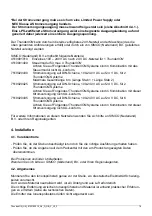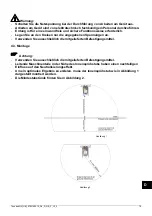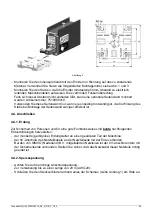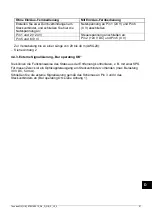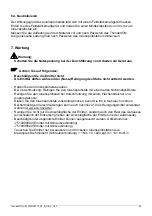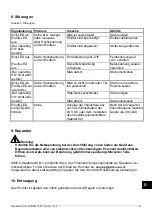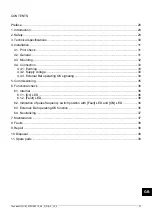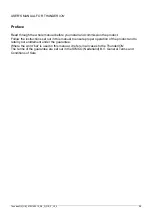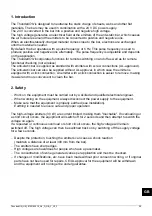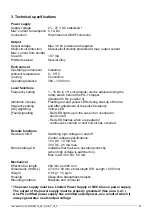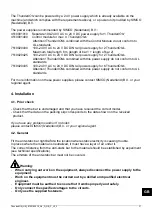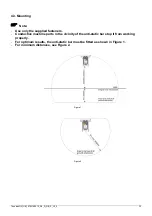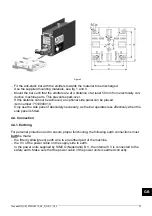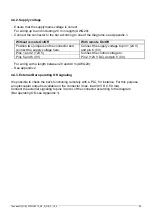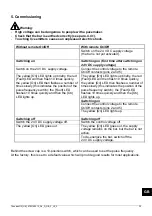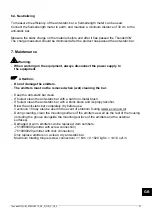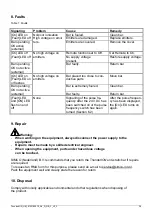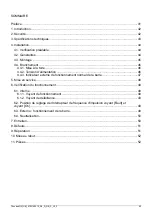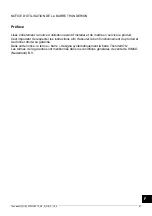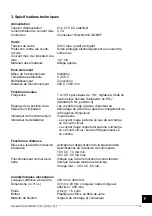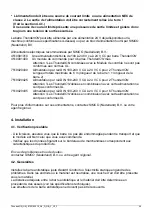
ThunderION_UM_9752160010_NL_D_GB_F_V2_2
29
GB
1. Introduction
The Thunder
ION
is designed to neutralise the static charge of sheets, webs and other flat
materials. The bars may be used in combination with a 24 V DC power supply.
The 24 V is converted in the bar into a positive and negative high voltage.
The high voltage generates an electrical field at the emitters of the anti-static bar, which causes
the air molecules around the emitters to be converted to positive and negative ions.
When an electrostatically-charged material comes close to the bar, electrons are exchanged
until the material is neutral.
By default, the bar operates with a pulse frequency of 5 Hz. This pulse frequency is used to
produce positive and negative ions alternately. The pulse frequency is adjustable and depends
on the application.
The Thunder
ION
incorporates functions for remote switching on and off as well as for remote
functional checking (not wireless).
The anti-static bar is supplied as standard with emitters with screw connections (UL-approved).
The anti-static bar can also be supplied without UL approval, in which case the emitter is
equipped with a click connection. An emitter with a click connection is easier to remove, making
it easier and more convenient to clean the bar.
2. Safety
Work on the equipment must be carried out by a skilled and qualified electrical engineer.
When working on the equipment, always disconnect the power supply to the equipment.
Make sure that the equipment is properly earthed (see installation).
Earthing is needed to ensure safe and proper operation
.
The high-voltage emitters (30 kV) are current limited, making them "touchable". If overloading or
a short circuit occurs, the equipment will switch off for 2 seconds and then attempt to switch the
voltage on again.
If a repeated or continuous overload or short circuit occurs, the high voltage will remain
switched off. The high voltage can then be switched back on by switching off the supply voltage
for a few seconds.
Despite the protection, touching the emitters can cause a shock reaction
(maintain a distance of at least 300 mm from the bar).
The emitters have sharp edges.
High voltages are hazardous for people who have a pacemaker.
The concentration of ozone generated varies per application and must be checked.
If changes or modifications, etc. have been made without prior consent in writing, or if original
parts have not been used for repairs, CE/UL approval for the equipment will be withdrawn
and the equipment will no longer be under guarantee.




